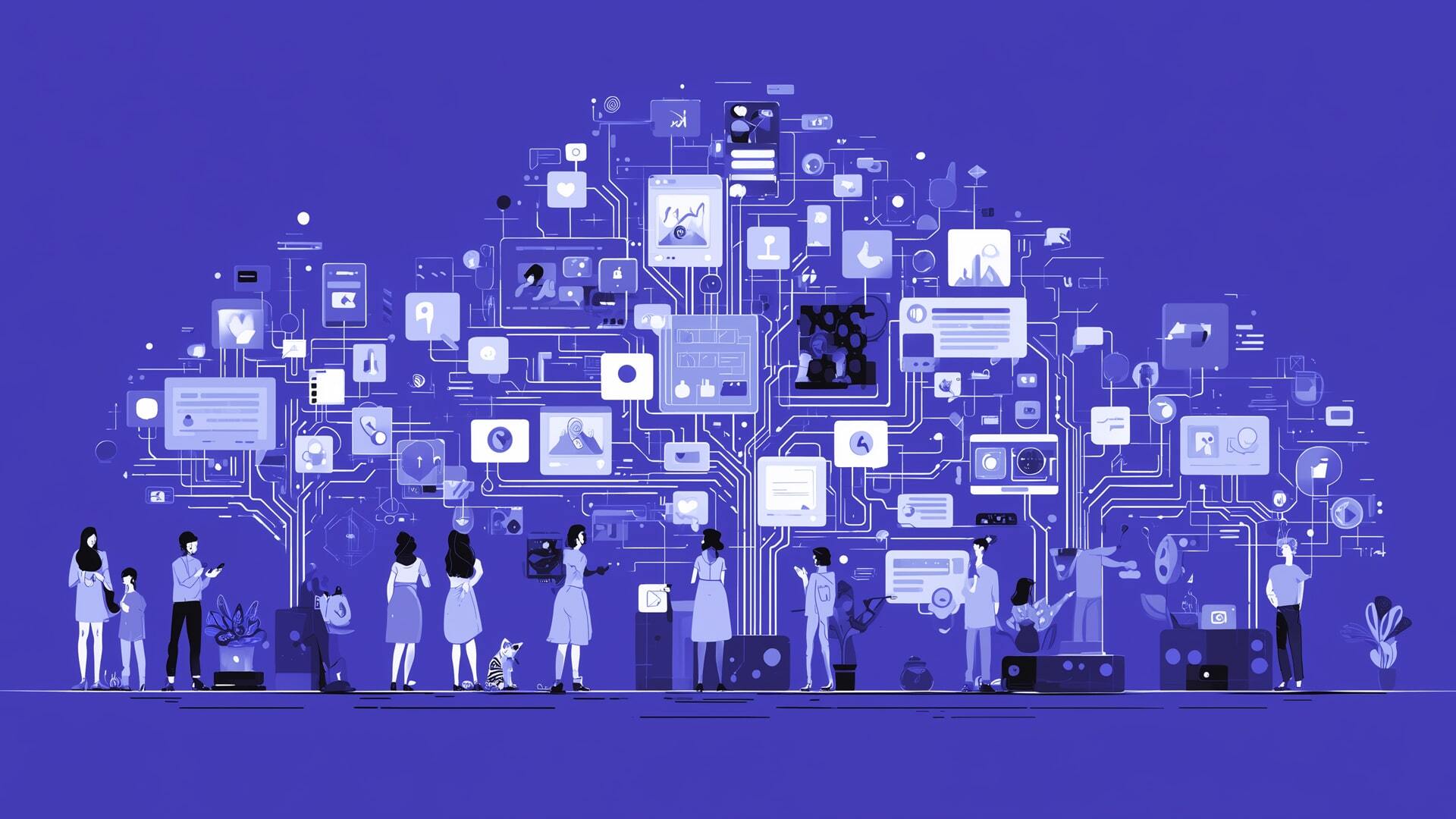- AI
- Social Media
- Facebook Ads
- 10.10.2025
Navigating Meta's AI Automation Shift: What Marketers Need to Know

The advertising world is evolving rapidly, and Meta’s latest AI automation updates are pushing that transformation even further. These developments promise efficiency and accessibility, but they also introduce new challenges for marketers. Here’s an overview of what’s changing, what it means for advertisers, and how marketing teams can adapt.
Meta’s Vision for AI in Advertising
Meta’s AI rollout centers on four key goals:
-
Efficiency: AI will generate ad copy, visuals, and variations instantly, reducing the need for manual production. This means faster testing and optimization.
-
Accessibility: Small businesses will gain access to high-quality ad tools without the need for large creative teams.
-
Cost Reduction: AI promises to cut down hours spent managing campaigns and reduce wasted ad spend through real-time optimization.
-
Strategic Shift: Marketing professionals will move from executing campaigns to guiding AI strategy, ensuring compliance, and maintaining creative integrity.
While these goals sound promising, not everything is seamless yet. Current AI optimizations don’t always deliver ideal results, meaning human oversight remains essential. The future of marketing will hinge on balancing machine efficiency with human creativity.
The Latest AI Integrations
Meta has already begun introducing several AI-powered tools and features:
-
Voice Translation for Reels: Users can now post content in one language and have Meta automatically translate it into another, with synced lips and tone. This feature is currently limited to users with over 1,000 followers.
-
Ad Llama: Meta’s ad-focused language model uses reinforcement learning with human feedback. The system improves its ad copy based on real-world performance, similar to how a model learns through positive reinforcement. Early tests show click-through rates improving by nearly 7%.
-
Creative Partnerships: Rather than building every tool in-house, Meta has partnered with creative AI companies to enhance the quality of visuals across its platforms.
-
Super Intelligence Lab: Meta has established a dedicated AI research and development division to push the boundaries of personalized, intelligent systems.
The Roadmap Ahead
Meta’s AI rollout began in 2023 with the introduction of chatbots and language models. By 2024, those tools had expanded across major platforms, and by mid-2025, new features like video editing and voice translation were introduced.
The company’s roadmap suggests that by late 2025, advertisers will be able to upload an image, text, and budget, and the AI will generate ad leads automatically. The final phase of full automation is expected by the end of 2026, with AI managing everything from creation to targeting and optimization.
Industry Challenges and Compliance Risks
Automation will not affect all industries equally. Sectors like finance, healthcare, pharmaceuticals, and government face strict advertising regulations. AI-generated content in these areas could unintentionally create misleading claims or omit required disclaimers.
To prevent compliance issues, human review will remain necessary. Even as automation increases, ad campaigns will still need approval before going live. Meta may eventually offer brand-safety customization settings, but at present, marketers must build their own prompt libraries and brand-safe templates to ensure compliance.
The Human Role in an Automated World
Rather than replacing marketers, AI is redefining their role. Success will depend on guiding AI systems, ensuring brand integrity, and maintaining transparency. Key responsibilities will include:
-
Compliance Translation: Turning legal or brand-specific language into AI-safe prompts.
-
Human-in-the-Loop Systems: Maintaining human oversight to review and approve AI-generated content.
-
Guardrails and Templates: Building tone, style, and brand-safe libraries to guide AI output.
-
Audit Trails: Documenting every draft, edit, and approval for accountability and legal review.
Marketers who embrace these roles will not just survive automation, but thrive in it. AI is not a replacement for strategy or creativity—it is a tool that, when guided thoughtfully, can amplify both.
Looking Ahead
The coming years will bring deeper integration of AI into every stage of advertising, from creative development to campaign management. Staying ahead means learning how to collaborate with these tools, setting clear brand standards, and developing processes that ensure AI outputs remain compliant and high-quality.
The future of marketing belongs to teams that combine human insight with technological innovation. Those who adapt early will set themselves apart from those who wait until it’s too late.